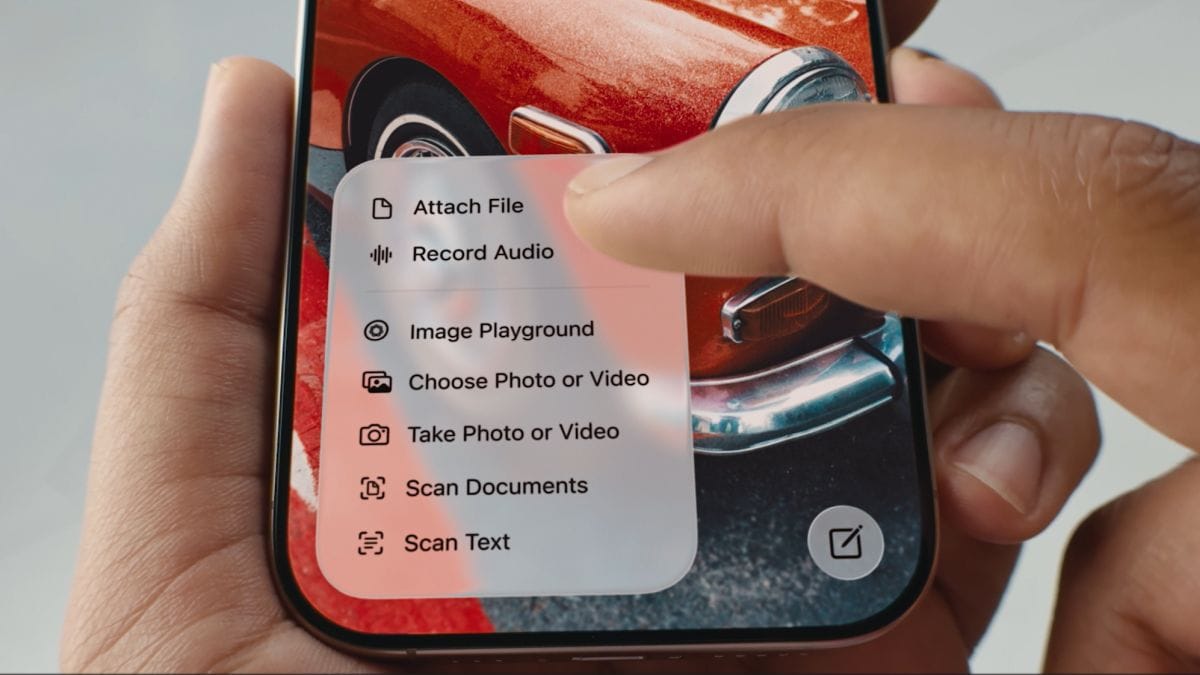WWDC 2025: Prepare for iOS 26, iPadOS 26, and the Dazzling Era of Liquid Glass
Apple, at its Worldwide Developer’s Conference (WWDC) 2025 keynote, went all out with a full suite of updates – some of which can even be referred to as “groundbreaking” across its software platforms. Of course, the highlight for the keynote remains Liquid Glass, the all-new translucent material design that will extend across all software platforms, including iOS 26, iPadOS 26, macOS Tahoe 26, watchOS 26, and tvOS 26.
However, a major highlight for me was the iPadOS upgrades that bring Windowing, Menu Bar, and Pointer – all macOS-style updates that finally make it more multitasking-friendly.
iOS 26: The New Order for iPhones
The all-new glass look is also available for your iPhone. Starting later this year, the iOS 26 update will be available to iPhone 16e to iPhone SE (Second-gen) devices. Of course, the new iPhone 17 series will launch with the latest iOS 26 pre-installed out of the box.
![]()
The new iOS 26 is now available for beta testing through Apple Developer Program
Announcing the new redesign, Apple’s Alan Dye, VP of Human Interface, during the keynote, compared it to the last major redesign with iOS 7 in 2013, which was inspired by the emergence of Retina displays.
The new redesign extends across the system, with optical qualities of glass and fluidity coming to your Lock Screen, Home Screen, Control Centre, apps, and more. This also expands to the lock screen, where the time dynamically adapts to your photo and the surrounding space. Then, there are the updated app icons, crafted from the Liquid Glass theme, which are available across both light and dark themes, as well as dynamic navigation and controls.
![]()
Even the lock screen has been redesigned, keeping the Liquid Glass theme
iOS 26 also brings a ton of new features for iPhone users, like call screening that automatically answers unknown callers, new screening tools for spam, Hold Assist, Polls in Group Messages, and more. We will break down every aspect of the latest iOS 26 in our first impressions that we will post after a few days.
The Liquid Glass Transformation
Apple is calling it the next chapter in its software design that brings translucent material across software platforms. While it does give a fresh look to the entire Apple ecosystem but, it also brings flashes from Windows Vista, for me that was introduced in 2007. Apple showcased at its keynote how Liquid Glass adapts to light and dark themes across devices and intelligently syncs with the content on-screen.
![]()
The new Liquid Glass design extends across iOS 26, iPadOS 26, macOS Tahoe 26, watchOS 26, and tvOS 26
The company also showcased how the controls and navigation across apps will be crafted from Liquid Glass and will fluidly transform to bring more focus to a user’s content. The attention to detail is notable, extending to the smallest elements, such as buttons, switches, sliders, text, and media controls, as well as larger elements like tab bars and sidebars for navigating apps. iOS 26 also introduces redesigned controls, toolbars, and navigation within apps. Of course, the updated design elements span across system apps like Camera, Photos, Safari, FaceTime, Apple Music, Apple News, and Apple Podcasts. Even on the lock screen, Apple has revamped how photo wallpapers with clocks appear, incorporating the entire fluidity concept with Liquid Glass.
The developers can now refresh the design of their app using SwiftUI, UIKit, and AppKit, that have updated APIs.
iPadOS Finally Moves Closer to Being a Multitasking Machine
From the keynote, the biggest overhaul for me was for iPadOS, which gets macOS-style redesigns that not only make it look fresh but also more multitasking friendly.
![]()
iPadOS 26 will let users customise the home screen in line with the Liquid Glass redesign
The windowing system, menu bar, and pointer are welcome changes, and I think my iPad can finally replace my Mac for daily tasks. While the apps still open in full-screen mode, but users now have the option to resize – showcased at the WWDC keynote. There’s also window tiling that enables users to arrange their windows with a flick. Then, there’s a new menu bar to access the commands available within an app. Note to miss: the iPadOS 26 also brings the ability to manage, access, and edit files. Well, from the looks of it, the iPadOS definitely feels more intuitive and with quick switching possible – it feels more multitasking friendly – a complaint a lot of iPad users always had with iPadOS.
